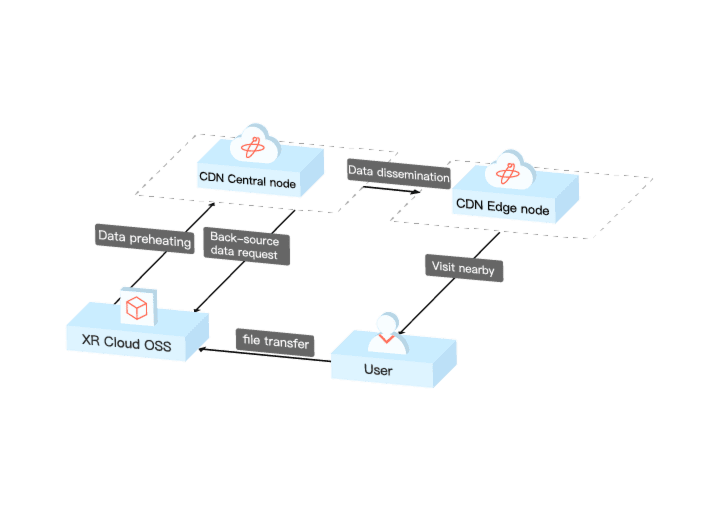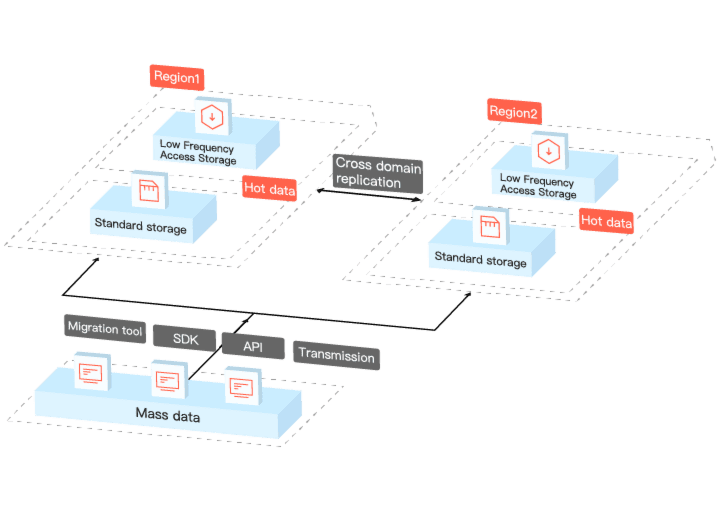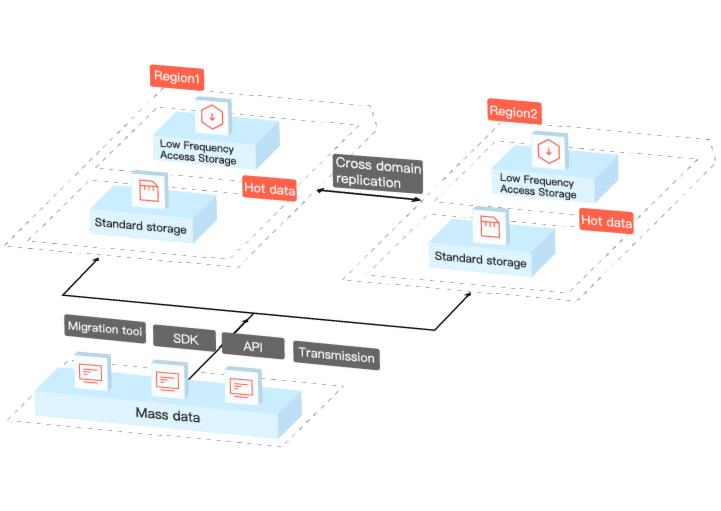- Tech Support
- English-US
- Console
- User Center
- Billing Center
- Message Center
- Activity Log
- {{userName}} Log Out
Storage Bucket
Before uploading any files to OSS, you need to first create storage bucket to store the files. If you no longer need storage bucket, you can remove it to avoid further costs.
Modify Read and Write Accessto Storage Bucket
OSS provides permission control through Bucket Policy. You can choose permission control when you create the storage bucket, or modify the Bucket Policy later in the permission settings after creating the bucket.
Anti-theft Chain
OSS can set an anti-theft chain method based on the referrer of the header field in the HTTP header, which can reduce extra cost.
You can use OSS and CDN services together to implement full network coverage and efficient content distribution, you can also flexibly deal with heavy traffic and high concurrency business scenarios. You can use OSS as the source station, put hot resources in OSS, and then send the resources down to the end users through CDN. It reduces flow cost and time delay of terminal access.

Your data can be synchronized to a designated area in real time through cross-region replication function. It implements remote disaster tolerance of data, and smoothly deals with extreme disasters to ensure secure enterprise operations.

For large-volume data on cloud backup (cold/hot standby), OSS supports two storing method based on data access frequency. For the cold data with a relatively lower access frequency and speed, it’s recommended that you store your data in low-frequency access storage. Without reducing the durability of data, it can reduce storage costs by about 50%, and provides a cheap space for your data.

Accelerated Data Distribution

You can use OSS and CDN services together to implement full network coverage and efficient content distribution, you can also flexibly deal with heavy traffic and high concurrency business scenarios. You can use OSS as the source station, put hot resources in OSS, and then send the resources down to the end users through CDN. It reduces flow cost and time delay of terminal access.
Across- region ReplicationDisaster Recovery

Your data can be synchronized to a designated area in real time through cross-region replication function. It implements remote disaster tolerance of data, and smoothly deals with extreme disasters to ensure secure enterprise operations.
Mass Data Archiving

For large-volume data on cloud backup (cold/hot standby), OSS supports two storing method based on data access frequency. For the cold data with a relatively lower access frequency and speed, it’s recommended that you store your data in low-frequency access storage. Without reducing the durability of data, it can reduce storage costs by about 50%, and provides a cheap space for your data.

Stable and Reliable
OSS expands automatically without affecting external services. The data is automatically backed up with multiple redundancies and can be restored through intelligent scheduling to ensure stable and highly available services.

Mass Storage
With PB massive storage buckets, you have access to unlimited size of bucket without worrying about storage bucket becoming the bottleneck for fast business growth.

Low Cost
You can pay for storage buckets as you go without costs such as purchasing, deployment, operation and maintenance,etc. You can store and manage data resources economically.

Hello there!
Thanks for using XRCLOUD. We strive to provide the highest quality and care deeply about your concerns.